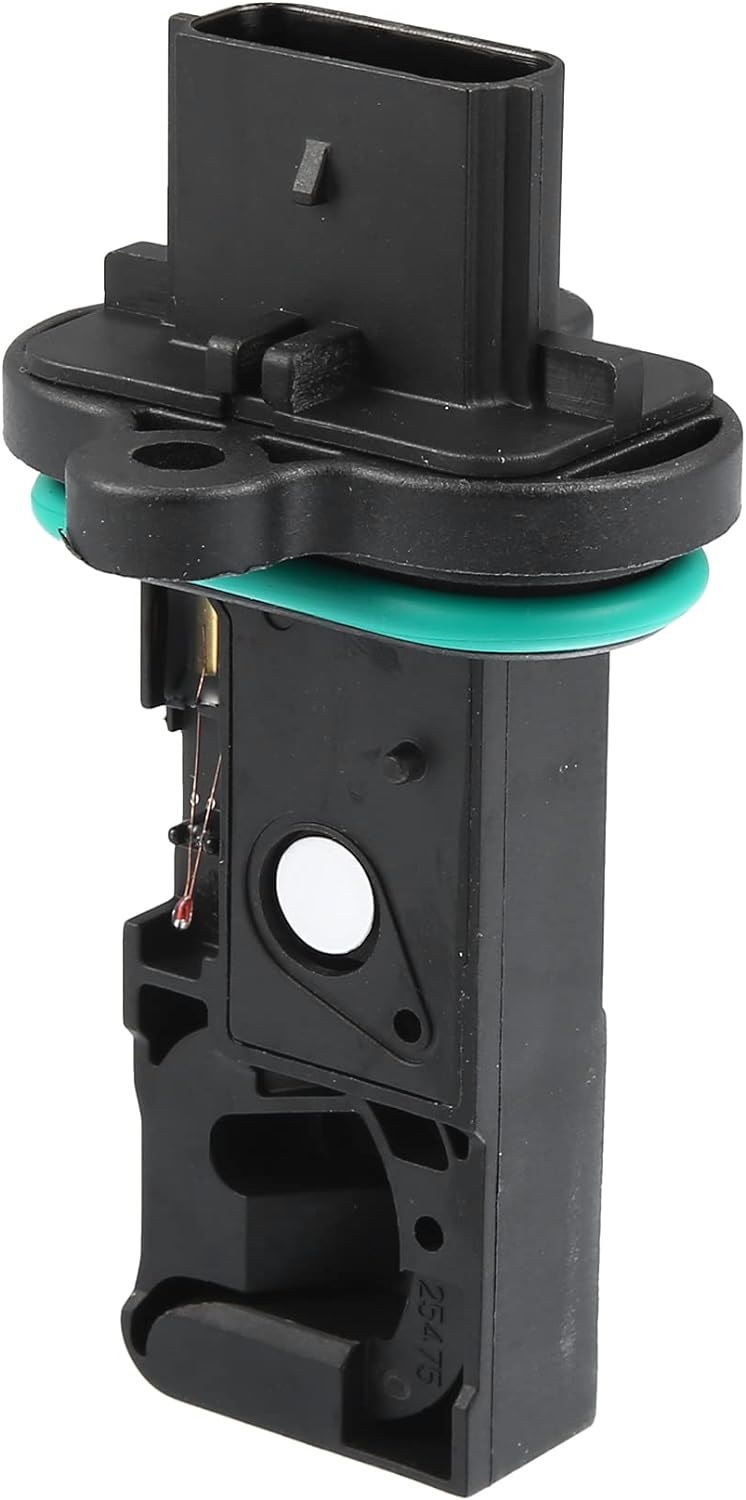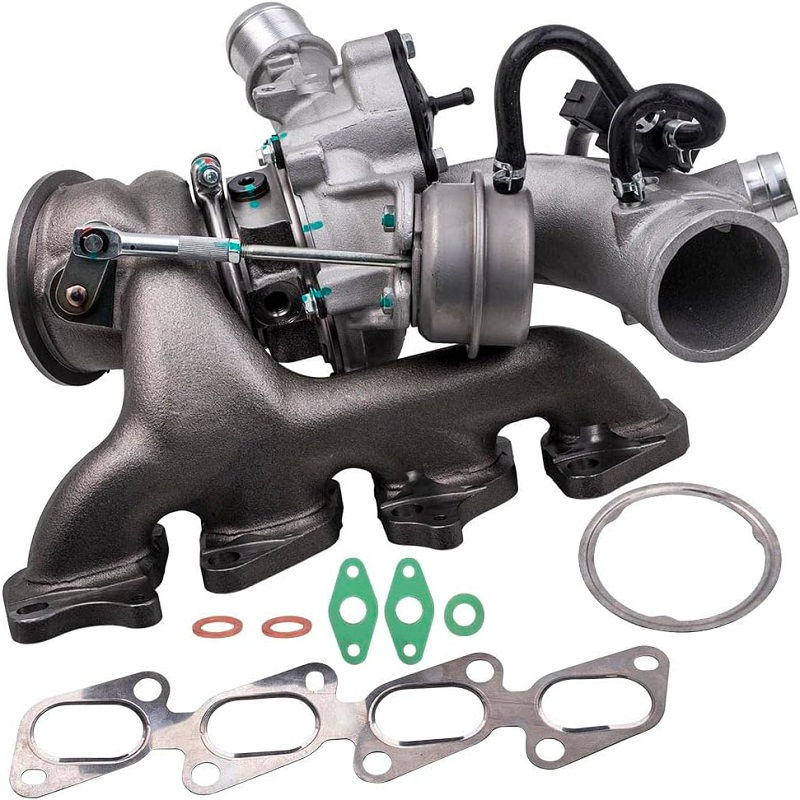This post contains affiliate links. This means I will make a commission at no extra cost to you should you click through and make a purchase [ “As an Amazon Associate, I earn from qualifying purchases.” ]. Read the full disclosure here.
Chevy Cruze Mass Air Flow Sensor GuideMechanic.Com The mass air flow sensor is a crucial component in the Chevy Cruze, responsible for measuring the amount of air entering the engine.
This sensor plays a vital role in the engine’s performance, ensuring the right air-fuel mixture for efficient combustion.
In this blog article, we will delve deep into the functioning and significance of the Chevy Cruze mass air flow sensor, providing you with a comprehensive understanding of its role in optimizing your vehicle’s performance.
Understanding the Mass Air Flow Sensor

The mass air flow sensor, often abbreviated as MAF sensor, is an essential part of modern fuel-injected engines, including the Chevy Cruze.
It is responsible for monitoring the amount of air that enters the engine and relaying this information to the engine control unit (ECU).
See Also: 2015 Chevy Cruze Water Pump
By accurately measuring the air intake, the mass air flow sensor ensures the optimal air-fuel mixture for combustion, crucial for the engine’s performance and efficiency.
Types of Mass Air Flow Sensors
There are two main types of mass air flow sensors commonly found in vehicles, including the Chevy Cruze:
1. Hot Wire Mass Air Flow Sensor: This type of sensor incorporates a thin wire heated by an electric current. As the intake air flows past the wire, it cools down, and the sensor measures the current required to maintain the wire’s temperature. The amount of current correlates to the volume of air entering the engine.
2. Vane (Vane Air Flow) Mass Air Flow Sensor: Vane air flow sensors utilize a hinged flap or vane that moves in response to the intake airflow. The sensor measures the movement of the vane, which helps determine the air intake volume.
Advantages and Disadvantages of Different Mass Air Flow Sensors
Hot wire mass air flow sensors offer several advantages, including:
– High accuracy in measuring airflow
– Quick response time
– Less susceptible to contamination
However, they can be more expensive to manufacture and may require additional circuitry to account for variations in air temperature.
On the other hand, vane mass air flow sensors have their own set of advantages and disadvantages:
– Lower cost compared to hot wire sensors
– Simpler design and construction
– Potentially more robust for off-road or heavy-duty applications
– Prone to contamination due to the exposed vane
– Less precise airflow measurement compared to hot wire sensors
Signs of a Faulty Mass Air Flow Sensor

As with any vehicle component, the mass air flow sensor can experience issues over time. Recognizing the signs of a faulty sensor is crucial in maintaining optimal performance in your Chevy Cruze.
Decreased Fuel Efficiency
One of the most common symptoms of a faulty mass air flow sensor is decreased fuel efficiency. When the sensor fails to accurately measure the airflow, the engine control unit may deliver excessive fuel, resulting in inefficient combustion. This can lead to increased fuel consumption and reduced mileage.
Engine Misfires
A faulty mass air flow sensor can also cause engine misfires. Inaccurate air intake measurements can disrupt the proper air-fuel mixture, leading to incomplete combustion and misfiring. This can result in rough idling, sputtering, and overall poor engine performance.
Erratic Idling
If you notice your Chevy Cruze idling erratically, it could be a sign of a malfunctioning mass air flow sensor.
The sensor’s inability to accurately measure air intake can cause the engine to idle inconsistently, fluctuating between higher and lower RPMs.
Lack of Power
A faulty mass air flow sensor can impact the engine’s power output. Inaccurate airflow measurements can lead to an inadequate air-fuel mixture, resulting in reduced power during acceleration or while driving uphill.
Check Engine Light
In some cases, a faulty mass air flow sensor can trigger the check engine light on your dashboard. When the sensor’s readings deviate from the expected values, it sends a signal to the engine control unit, which then illuminates the check engine light as a warning.
Importance of Regular Maintenance

Proper maintenance of the mass air flow sensor is essential for ensuring its optimal performance and longevity.
See Also: 2014 Chevy Cruze Coil Pack
Neglecting maintenance can have significant consequences for your Chevy Cruze’s overall performance and fuel efficiency.
Avoiding Contamination
The mass air flow sensor is susceptible to contamination from dust, dirt, and debris present in the intake air. Over time, these contaminants can build up on the sensor’s sensitive elements, affecting its accuracy. Regular maintenance, including air filter replacement, can help minimize the risk of contamination and ensure the sensor operates effectively.
Preventing Sensor Damage
Extreme temperature variations, moisture, and physical damage can compromise the mass air flow sensor’s functionality. Regular maintenance involves inspecting the sensor for any signs of damage or wear and addressing them promptly to prevent further deterioration.
Cleaning the Mass Air Flow Sensor
Cleaning the mass air flow sensor, when necessary, is an essential maintenance task. It helps remove accumulated contaminants and ensures accurate readings. However, it is crucial to use the appropriate cleaning solution and follow the manufacturer’s guidelines to avoid damaging the sensitive sensor elements.
Checking Electrical Connections
Regular maintenance involves inspecting the electrical connections of the mass air flow sensor to ensure they are secure. Loose or corroded connections can disrupt the sensor’s operation and lead to inaccurate readings.
Cleaning and Troubleshooting Tips
The mass air flow sensor’s functionality can be affected by various factors, including contamination and minor issues. Knowing how to clean and troubleshoot the sensor can help you maintain its performance without the need for professional assistance.
Cleaning the Mass Air Flow Sensor
When cleaning the mass air flow sensor, it is crucial to follow the manufacturer’s instructions and use a specialized cleaning solution designed for this purpose. Here’s a step-by-step guide to cleaning your Chevy Cruze’s mass air flow sensor:
Step 1: Locate the Sensor
The mass air flow sensor is typically located between the air filter housing and the engine’s intake manifold. Refer to your vehicle’s manual to find the exact location.
Step 2: Disconnect the Sensor
Before cleaning, disconnect the electrical connector attached to the mass air flow sensor to avoid any electrical damage during the cleaning process.
Step 3: Remove the Sensor
Depending on the sensor’s design, you may need to remove it from the intake system. Follow the manufacturer’s instructions to remove the sensor safely without causing any damage.
Step 4: Clean the Sensor
Using the appropriate cleaning solution, carefully clean the sensor’s elements, ensuring you remove any accumulated dirt or contaminants. Be gentle to avoid damaging the sensor’s delicate components.
Step 5: Allow the Sensor to Dry
After cleaning, allow the sensor to air dry completely. Avoid using compressed air or heat sources, as they can damage the sensor.
Step 6: Reinstall the Sensor
Once the sensor is dry, reinstall it following the manufacturer’s instructions. Ensure the electrical connector is securely attached.
Troubleshooting Minor Issues
In addition to cleaning, you can troubleshoot minor issues with the mass air flow sensor to ensure optimal functionality. Here are a few troubleshooting tips:
Check for Loose Connections
Inspect the electrical connections of the mass air flow sensor to ensure they are secure. Tighten any loose connections and clean any corrosion or debris that may be present.
Inspect the Air Intake System
Examine the air intake system for any leaks, loose hoses, or damaged components. Any leaks or loose connections can disrupt the airflow and affect the mass air flow sensor’s readings.
Reset the Check Engine Light
If the check engine light is illuminated due to a minor issue with the mass air flow sensor, you can try resetting it.
See Also: Engine Power Reduced Chevy Impala
Disconnect the vehicle’s battery for a few minutes, then reconnect it. This can clear any temporary error codes and turn off the check engine light.
The Role of the Mass Air Flow Sensor in Fuel Efficiency
The mass air flow sensor directly influences the fuel efficiency of your Chevy Cruze. Understanding its role and maintaining its optimal functionality can help you maximize your vehicle’s fuel economy.
Accurate Air-Fuel Mixture
The mass air flow sensor ensures that the engine receives the necessary amount of air for efficient combustion.
By accurately measuring the airflow, the sensor helps the engine control unit determine the appropriate fuel injection rate, ensuring the ideal air-fuel mixture. This precise mixture promotes efficient combustion, leading to improved fuel efficiency.
Optimizing Fuel Delivery
A properly functioning mass air flow sensor allows the engine control unit to adjust the fuel delivery based on the air intake measurements. This real-time adjustment ensures that the engine receives the correct fuel quantity
Minimizing Fuel Wastage
When the mass air flow sensor malfunctions or provides inaccurate readings, the engine control unit may deliver excess fuel, resulting in fuel wastage.
This can significantly impact your Chevy Cruze’s fuel efficiency, as the engine is not receiving the appropriate air-fuel mixture for optimal combustion.
By ensuring the mass air flow sensor is in good working condition, you can minimize fuel wastage and improve overall fuel economy.
Identifying Fuel System Issues
The mass air flow sensor plays a crucial role in the fuel delivery system of your Chevy Cruze. If there are any underlying issues with the fuel system, such as a clogged fuel injector or a faulty fuel pump, the mass air flow sensor can help identify these problems.
Inaccurate readings from the sensor can indicate a problem with the fuel system, allowing you to address it promptly and maintain optimal fuel efficiency.
Upgrading Your Mass Air Flow Sensor
While the stock mass air flow sensor in your Chevy Cruze is designed to meet the vehicle’s performance requirements, upgrading to an aftermarket sensor can offer potential performance improvements. However, it is essential to consider various factors before opting for an upgraded sensor.
Performance Benefits
An upgraded mass air flow sensor can provide performance benefits, such as improved airflow measurement accuracy and faster response time.
See Also: Alternator For 2013 Chevy Malibu
These enhancements can result in better engine performance, increased power output, and smoother acceleration.
Compatibility and Fitment
Before purchasing an upgraded mass air flow sensor, ensure that it is compatible with your specific Chevy Cruze model. Check for fitment information provided by the manufacturer to ensure a proper installation. It is also advisable to consult with automotive experts or refer to reputable sources to ensure compatibility.
Quality and Reliability
When considering an upgraded mass air flow sensor, prioritize quality and reliability. Opt for reputable brands that have a track record of producing reliable and accurate sensors. Reading customer reviews and seeking recommendations can help you make an informed decision.
Professional Installation
Installing an upgraded mass air flow sensor may require specialized knowledge and tools. It is recommended to have the sensor installed by a professional technician who has experience working with your specific Chevy Cruze model. This ensures a proper installation and reduces the risk of damage to the sensor or other components.
DIY Mass Air Flow Sensor Replacement
If you are a hands-on enthusiast and have the necessary skills and tools, you can consider replacing the mass air flow sensor in your Chevy Cruze on your own. However, it is essential to follow proper procedures and take necessary precautions to ensure a successful replacement.
Gather the Required Tools
Before starting the replacement process, gather all the necessary tools. This typically includes a set of wrenches or sockets, pliers, and a screwdriver. Additionally, have a container to collect any spilled fluids and a clean cloth or rag for wiping surfaces.
Disconnect the Battery
Prior to replacing the mass air flow sensor, disconnect the negative terminal of the vehicle’s battery. This prevents any electrical damage and ensures your safety while working on the electrical components of your Chevy Cruze.
Locate the Sensor
The mass air flow sensor is typically located between the air filter housing and the engine’s intake manifold. Refer to your vehicle’s manual or online resources to identify the exact location of the sensor in your Chevy Cruze.
Remove the Old Sensor
Using the appropriate tools, carefully remove any components obstructing access to the mass air flow sensor. This may include removing the air filter housing or other intake components. Take note of the sensor’s orientation and the electrical connector attached to it.
Disconnect the Electrical Connector
Gently disconnect the electrical connector from the old mass air flow sensor. Pay attention to any locking mechanisms or clips that need to be released before disconnecting the connector. Avoid pulling on the wires to prevent damage.
Install the New Sensor
Take the new mass air flow sensor and align it with the mounting position in your Chevy Cruze. Ensure the sensor is properly oriented to match the previous installation. Carefully connect the electrical connector to the new sensor, ensuring it is securely fastened.
Reassemble Intake Components
If any intake components were removed, reassemble them in the reverse order of removal. Double-check that all connections are secure and properly tightened. Take care not to overtighten any bolts or screws to avoid damaging the components.
Reconnect the Battery
After completing the replacement, reconnect the negative terminal of the battery. This restores power to the vehicle and allows you to test the new mass air flow sensor.
Test and Verify
Start your Chevy Cruze and let it idle for a few minutes. Observe the engine’s behavior and ensure there are no abnormal noises or warning lights. Take the vehicle for a short test drive to verify that the new mass air flow sensor is functioning correctly.
Expert Tips for Prolonging Mass Air Flow Sensor Lifespan
To ensure the longevity and optimal performance of your Chevy Cruze’s mass air flow sensor, here are some expert tips:
Regular Maintenance
Perform regular maintenance tasks, such as air filter replacement, to minimize the risk of contamination and ensure proper airflow to the sensor. Adhere to the recommended maintenance schedule provided by the manufacturer.
Avoid Harsh Driving Conditions
Try to minimize exposure to extreme driving conditions, such as dusty or sandy environments, as these can increase the risk of sensor contamination.
See Also: 2013 Chevy Cruze Water Pump
Additionally, avoid driving through deep wateror other conditions that may cause water damage to the mass air flow sensor.
Use High-Quality Air Filters
Invest in high-quality air filters for your Chevy Cruze. Good quality filters can help prevent debris and contaminants from reaching the mass air flow sensor, reducing the risk of sensor malfunction or damage.
Avoid Using Harsh Cleaning Agents
When cleaning the mass air flow sensor, use cleaning solutions specifically designed for this purpose. Avoid using harsh chemicals or solvents that may damage the sensor’s delicate components. Follow the manufacturer’s instructions and recommendations for cleaning products.
Inspect and Replace Worn Components
Regularly inspect the intake system components for any signs of wear or damage. Replace any worn or damaged parts promptly to maintain optimal airflow and minimize stress on the mass air flow sensor.
Monitor Performance and Seek Professional Help
Pay attention to any changes in your Chevy Cruze’s performance, fuel efficiency, or engine behavior. If you suspect a problem with the mass air flow sensor, seek professional assistance for a thorough diagnosis and repair. Promptly addressing any issues can help prevent further damage and ensure the longevity of the sensor.
In conclusion, the mass air flow sensor plays a critical role in optimizing the performance and fuel efficiency of your Chevy Cruze.
Understanding its functioning, recognizing signs of malfunction, and performing regular maintenance are key to ensuring its optimal performance.
Whether you choose to clean, troubleshoot, or replace the sensor, it is important to follow proper procedures and take necessary precautions.
By prioritizing the health and maintenance of your mass air flow sensor, you can enjoy a smooth and efficient driving experience in your Chevy Cruze for years to come.
- Honda CR-V Catalytic Converter Price - April 24, 2025
- Toyota Catalytic Converter Price List with Pictures (2025) - April 23, 2025
- New Catalytic Converter Price in 2025 - April 23, 2025
